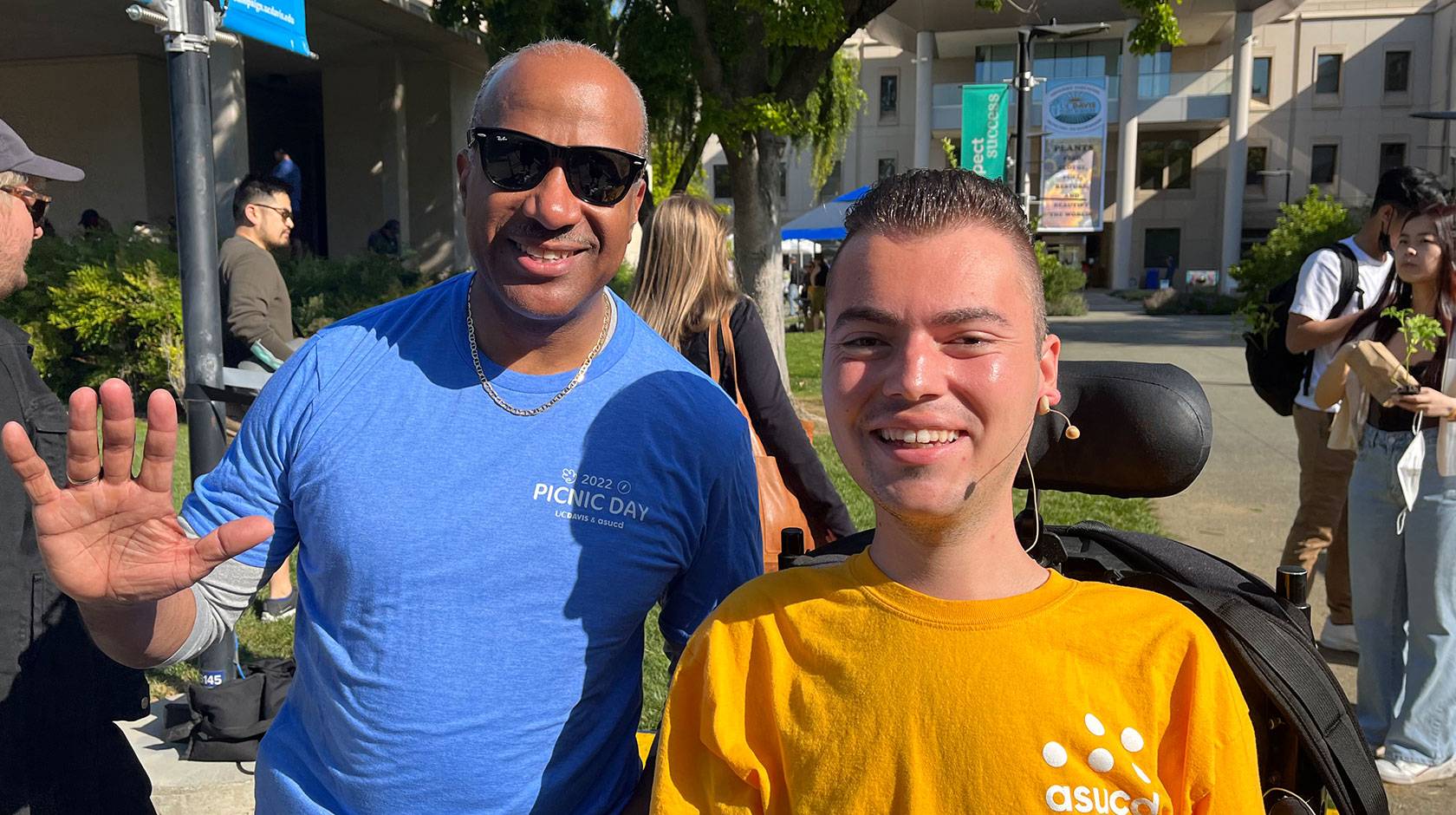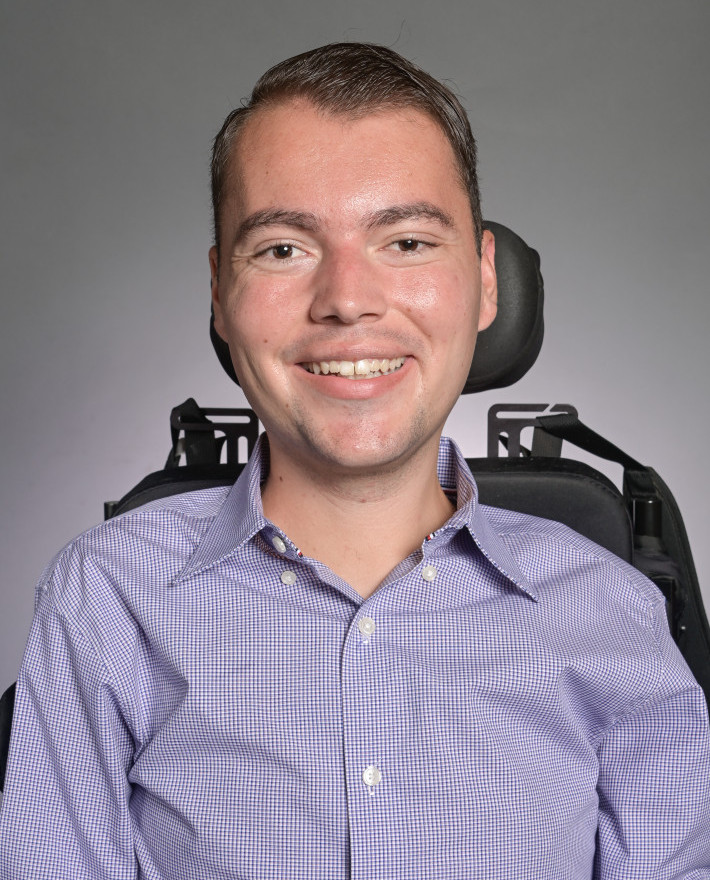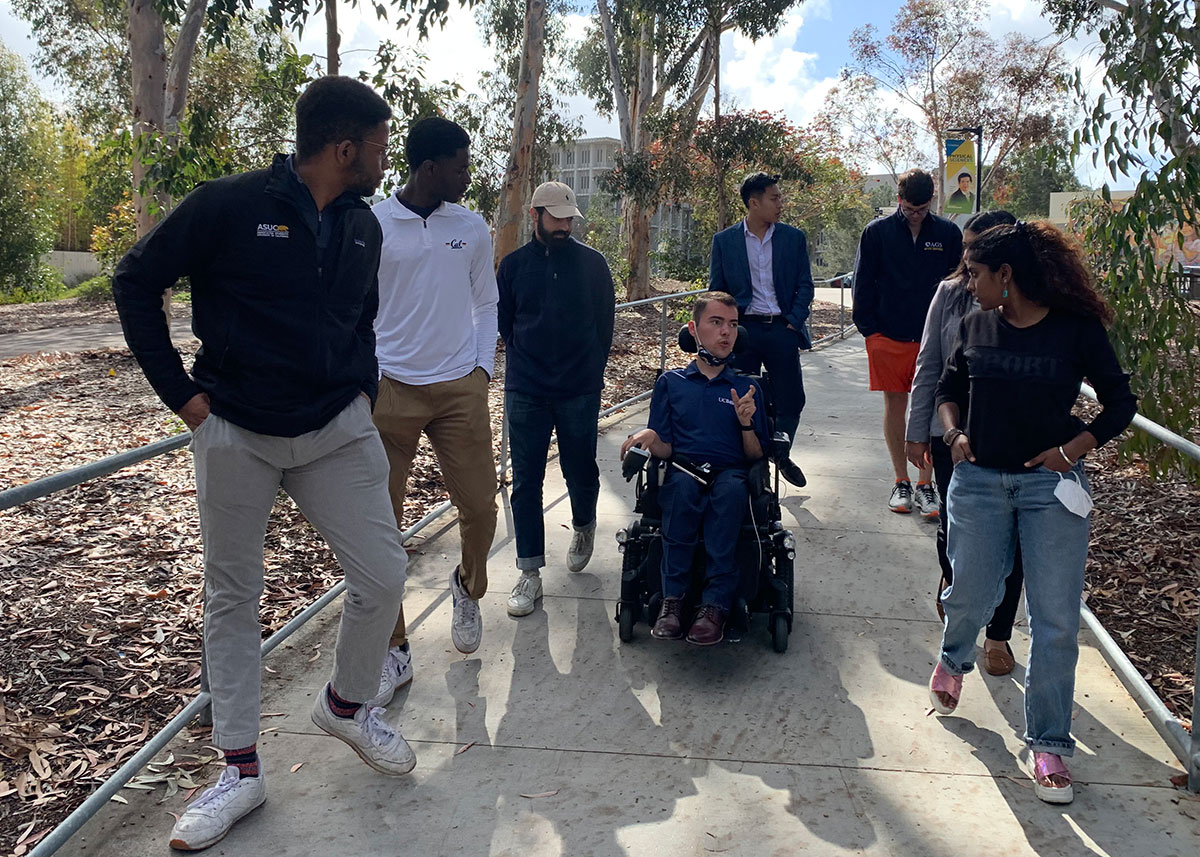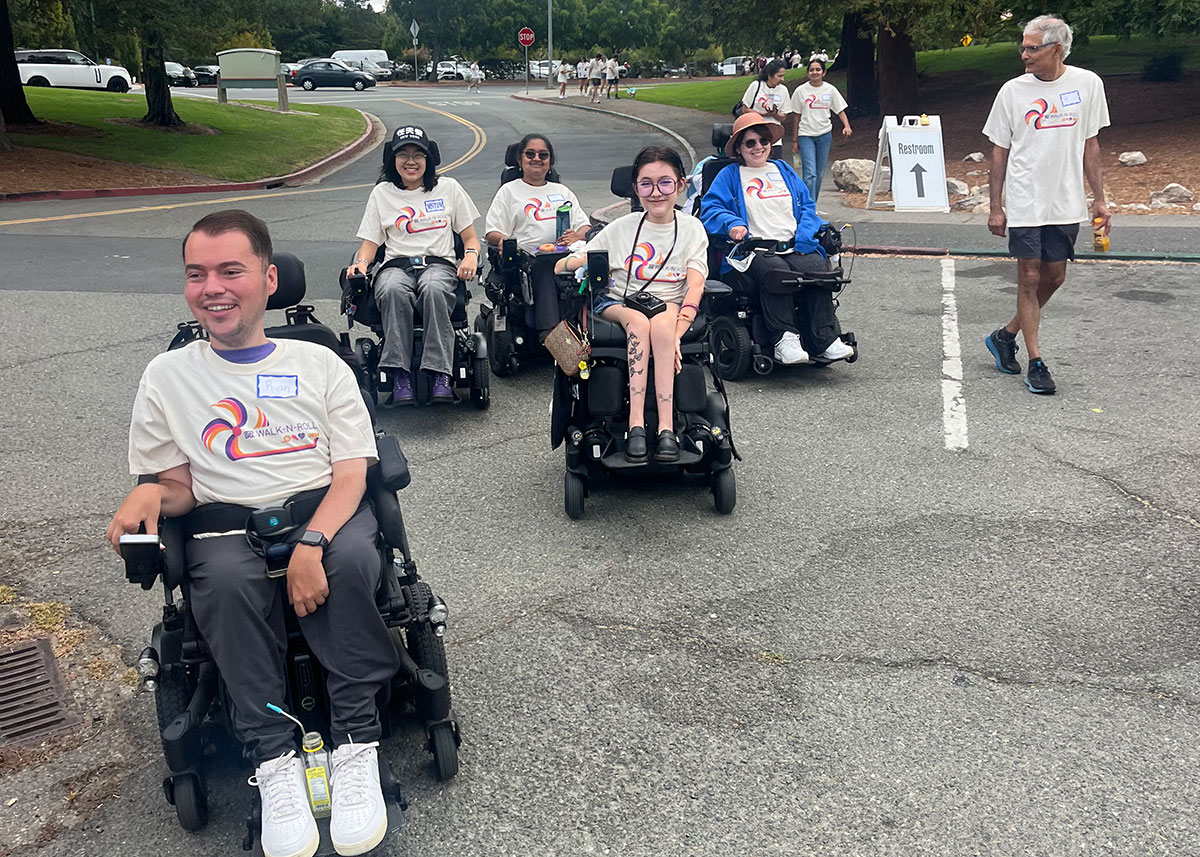Julia Busiek, UC Newsroom

As president of the student government at UC Davis, Ryan Manriquez led weekly meetings that started at 6 p.m. and could last until 2 or 3 in the morning.

UC Berkeley graduate student Ryan Manriquez, past president of the Associated Students of UC Davis and president of the UC Graduate and Professional Council.
“I’d be up there, wide-eyed and bushy tailed, every step of the way,” says Manriquez. “That is something that I never could have dreamed of when I was in high school, but it was something I did every single week when I was in college.”
The difference? A medication called Spinraza, which the FDA approved in 2016 to treat a rare genetic disease called spinal muscular atrophy, or SMA. Manriquez lives with the type II form of the disease. When he was diagnosed as a child, doctors explained that his body would get progressively weaker, making it harder and harder for him to breathe. They told his family that the condition was untreatable and that he was not likely to live to see his 30th birthday.
By high school, Manriquez could barely make it through the day. “When I would get picked up from school by my mom, I would be exhausted. I would take a nap in the car on the way home. I couldn't feed myself at the end of the day. I couldn't lift up a drink of water.”
'It completely stopped the progression of my disease'
But two days before Christmas in 2016, his life changed course. That was the day the FDA approved Spinraza as the first-ever treatment for SMA. The clinical trial had ended early, because patients who’d received the medicine saw such remarkable results that scientists couldn’t justify withholding it from the control group any longer.
Manriquez began treatment the next October. “It completely stopped the progression of my disease,” he says. “My life expectancy when I was born was 28. I'm 24 now, and I'm able to live a full life that someone without my disability would live.” He lived independently in a studio apartment while earning dual bachelor’s degrees from UC Davis and serving as a member, and then president, of the Associated Students of UC Davis. Now he’s earning a master’s in public policy from UC Berkeley, and he’s still serving his community: he’s president of the UC Graduate and Professional Council, representing 60,000 graduate students across all 10 UC campuses.

The four-decade search for a drug to treat SMA
Manriquez credits two important forces for the treatment that changed his life. The first is the SMA community, which has advocated for public funding, raised money and partnered with scientists to steer priorities for research for over 40 years, through the nonprofit Cure SMA.
The second is steady public funding for research through the National Institutes of Health, or NIH. As the main federal agency for biomedical research, NIH is a drug discovery powerhouse: of 356 new medicines that got FDA approval between 2010 and 2019, 354 or them — or 99.4% — were developed using NIH dollars.
The agency has funded dozens of studies into SMA over the course of Manriquez’s lifetime. Advances came from industry labs and from NIH headquarters in Maryland. But most emerged from a network of academic researchers at universities across the country and around the world, including the University of Utah, Ohio State, Indiana State, Harvard and UC Irvine.
So when Manriquez learned in February that the federal government planned to cut billions of dollars of NIH funding to universities, he knew he needed to speak up. He wrote an op-ed that was recently published in the Hill, and shared the impact of the cuts on UC graduate education, and on the SMA patient community, during remarks at the March UC Regents meeting.
“What I want my representatives to know is that funding medical research is about more than just numbers. It's real people,” he says. “No one in my family or in our community thought that a treatment would be possible in our lifetimes, but because of research funding attributed to this cause, we’re seeing these remarkable achievements.”

As the nation’s leader in NIH-backed research, the University of California is supporting legal action to block these cuts and avert dire consequences for patients like Manriquez — which is to say, anyone who lives with a disease that does not yet have a cure. That includes rare conditions like SMA, as well as those that sicken and kill millions of Americans every year, including heart disease, diabetes, Alzheimer’s disease and many forms of cancer.
“I know the impact NIH-funded research has had on me. So I know the impact it will have on others if treatments in the pipeline get delayed or impeded by any means,” he says. “It’s something we cannot afford.”
Meanwhile, Manriquez isn’t sure what kind of career he’ll pursue after graduation, but if his time at UC is any indication, he’ll keep on finding ways to have an impact. “Any capacity that I could serve my community and just help people, that's what I want to be doing,” he says.
Among the people he’ll look to for guidance along the way? Older members of the SMA community. “I can ask them for advice. If there wasn't a treatment, quite honestly, they wouldn't be alive to give it to me,” Manriquez says. “And that's something that's meaningful for me, in terms of mentorship, but also for the families that they start and the communities they're a part of.”

